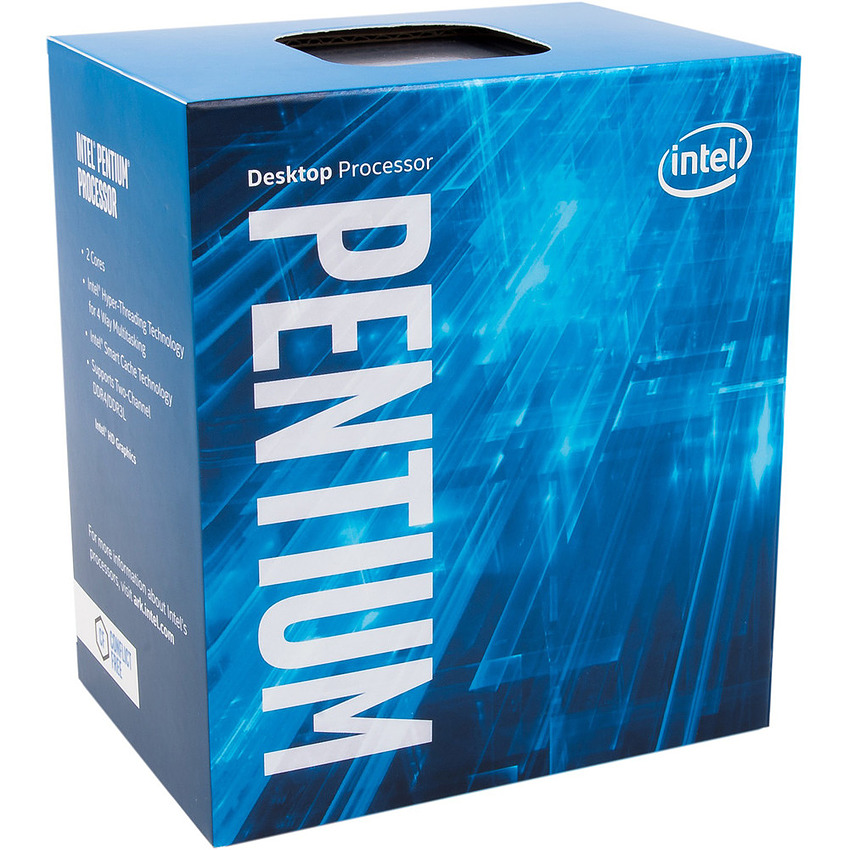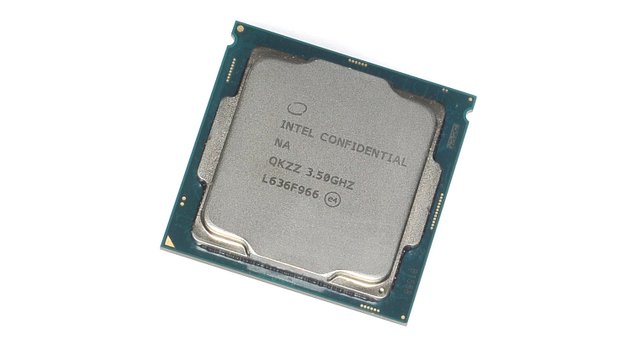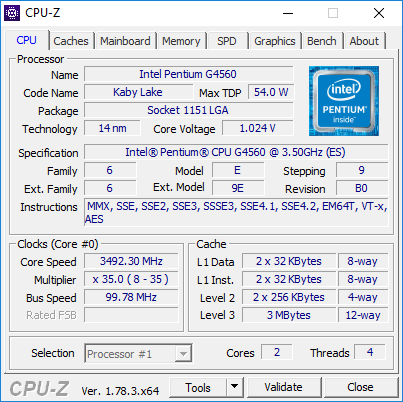Although the arrival of the "generation" Kaby Lake at the beginning was not very striking on the high end, it was accompanied on the entry level of a discrete but important change with the activation of the 'HyperThreading on the Pentium range, a function which allows to recall to optimize the use of the internal units of the processor by doubling the number of cores presented to the system.

We put the word "generation" in quotation marks because Kaby Lake is technically a minor evolution of the Skylake launched in September 2015.
This is in practice a new Skylake stepping that does not change the processor architecture, but brings small improvements to the IGP, such as decoding 4K HEVC 10 bit as well as decoding VP9. For the rest, it is the frequency that mainly differentiates Kaby Lake from Skylake with a slight increase largely obtained by the improvement of Intel's 14nm manufacturing process. We focused on launching the high-end models, the Core i7-7700K and i5-6700K.
Beyond these frequency changes, Intel has also slightly revised its practices of segmentation between models with therefore activation on the Pentium of HyperThreading.

this is Le Pentium G4560, version "Kaby Lake" disposant de l'HyperThreading
Technically, the Core i3 and the Pentium are fairly close now. In both cases, they are dual-core processors with HyperThreading, with an almost equivalent amount of L3 cache (3MB for Pentium, between 3 and 4 MB for the Core i3 depending on the models). In all cases the frequency is "fixed", these chips being devoid of Turbo.
Core i3-7350K: 2C / 4T, 4MB LLC, 4.2GHz, 60W, $ 168
Core i3-7320: 2C / 4T, 4MB LLC, 4.1 GHz, 51W, $ 149
Core i3-7300: 2C / 4T, 4MB LLC, 4.0 GHz, 51W, $ 138
Core i3-7100: 2C / 4T, 3MB LLC, 3.9 GHz, 51W, $ 117
Pentium G4620: 2C / 4T, 3MB LLC, 3.7 GHz, 51W, $ 86
Pentium G4600: 2C / 4T, 3MB LLC, 3.6GHz, 51W $ 75
Pentium G4560: 2C / 4T, 3MB LLC, 3.5GHz, 54W, $ 64
(In bold, the processors we tested today)
Segmentation requires, it remains a benefit of frequency to the Core i3 but also ... the AVX and AVX 2.0 that are disabled on the Pentium! This segmentation also crosses the ranges, the Pentium G4560 only having an HD Graphics 610 where all the others have a HD 630.
Behind these nomenclatures are two versions of Intel's PGIs. The HD Graphics 610 uses the version GT1 which has only 12 threads. The 630 uses the version GT2 which this time has duplicate units, 24. We will focus on this test on the pure CPU performance, not on those, necessarily limited iGPU in 3D. We refer you to this article or we were testing the very slow version 24 units.
To see how these processors are positioned, we evaluated the performance of the Pentium G4560 and the Core i3-7100. To be complete, we have also added a Pentium G4500 in our Skylake "generation" tests, as well as other processors previously tested.
Pentium G4500: 2C / 2T, 3MB LLC, 3.5GHz, 51W
Its characteristics are quite interesting since identical to those of the G4560, HyperThreading in less.

The Pentium's new interesting!
If the "Kaby Lake" generation will have been a non-event on the high end, the Intel foot switch on Pentium segmentation is much more. Finally, by proposing HyperThreading on these dual-core models, Intel brings back quite clearly the performance level of this range until then sandwiched between the Celerons and the i3. The same frequency comparison we did with the old Pentium G4500 and the new Pentium G4560, both clocked at 3.5 GHz, gives an advantage of 29% in applications and 30% in games, besides many titles Today call for at least four logical hearts to express themselves correctly or even to launch.
What to bring significantly the Pentium of the Core i3. The Core i3-7100, from the top of its 400 MHz advantage is 15% faster on average in applications, and 9% faster in games. For applications, the gain is greater than that gained by the frequency gain (11%), as we have seen in the last segmentation remaining between the Pentium and Core i3: the absence of AVX and AVX 2.0. This segmentation, on the other hand, has no impact in games, at least for the titles used in our protocol.
Compared to the Core i3, the price positioning is very advantageous for the Pentium, it is indeed a little over 70 euros for the Pentium G4560 tested today (we will add 20 euros to offer 100 MHz more With the G4600), while it takes 130 euros to afford the smallest Core i3, the 7100 that we also tested. This gives a clear advantage to the Pentium for tight budget configurations that will enjoy a level of performance not so far from a Core i5-2500K in some cases, with certainly the impossibility of overclocking.
Pentium's performance levels are re-positioning itself in anticipation of the competition with AMD's future Ryzen 3, even though the latter will not arrive until the third quarter. In the meantime it is especially its own range Core i3 that this change puts to evil!